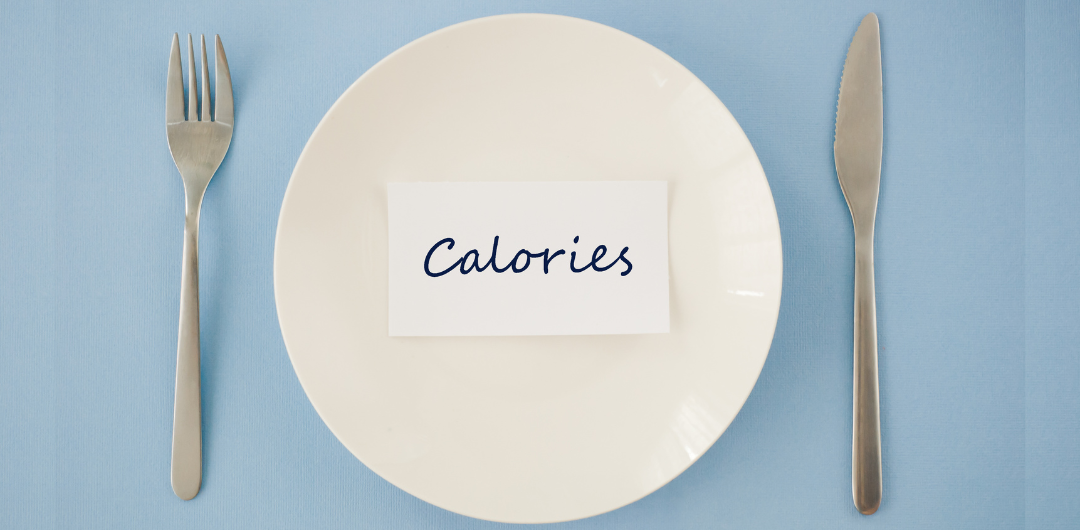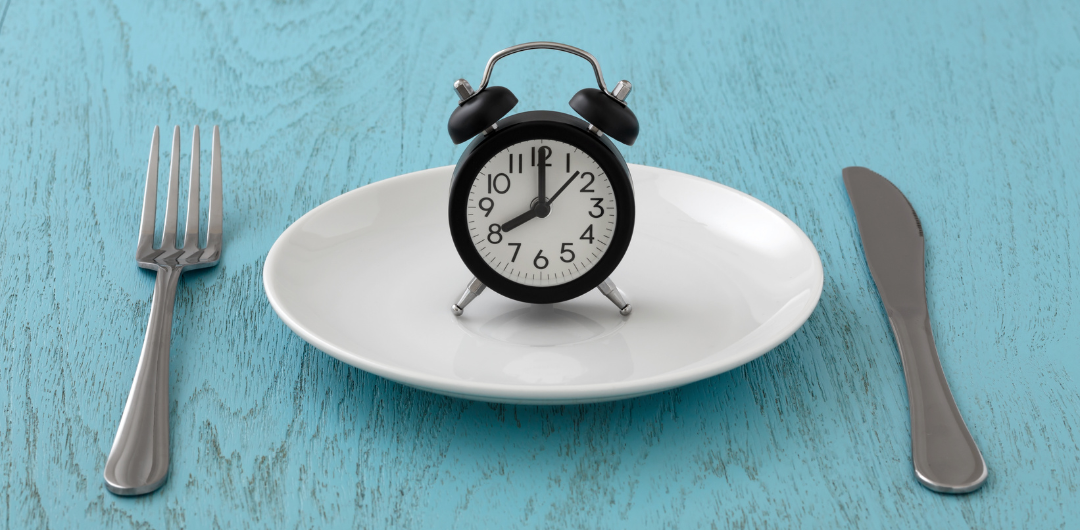
Losing Weight with a Calorie Deficit: Tips and Tricks to Crush Your Fitness Goals
Are you tired of trying every diet under the sun but still struggling to lose weight? Have you ever considered trying a true calorie counting deficit?
A calorie deficit is the key to weight loss and it's a simple concept – burn more calories than you consume.
However, many people struggle with implementing a calorie deficit healthily and sustainably.
When it comes to a calorie deficit, the science is actually quite straightforward - by creating a calorie deficit, an individual's body is prompted to break down stored fat to meet its energy needs, resulting in healthy weight loss, over time.
It is a fundamental concept in weight loss that underpins several popular diets and exercise programs.
In this blog post, we will explore the science behind calorie deficits predicting weight loss, tips and tricks to make a calorie deficit more manageable, and how to maintain a healthy lifestyle while losing weight.
So get ready to crush your fitness goals with these helpful tips!
The Importance of Tracking Your Calorie Intake to Lose Weight
Tracking calorie intake is a fundamental aspect of weight loss. It can help you better understand just how much energy and food you consume and make informed decisions about your diet.
In addition, by monitoring your calorie intake, you can ensure that you stay within your daily limit counting calories, which is essential for creating a calorie deficit.
A calorie deficit means burning more calories than you consume, which is necessary for weight loss. Keeping a food diary or using a calorie tracking online calculator app will effectively monitor your calorie intake.
These tools allow you to easily input the foods and drinks (yep, those liquid calories add up) you consume throughout the day and provide an estimate of the number of calories a day you have consumed. This information can help you adjust your diet by reducing portion sizes or substituting high-calorie foods for healthier options.
Tracking your calorie intake can also help you stay accountable for what you eat. Seeing everything you consume in black and white can be a reality check and encourage you to make healthier choices. Knowing that you must log everything you eat can also help you resist temptations and make better choices when indulging.
In addition to weight and body fat loss, tracking your calorie intake can help you identify areas where you may lack essential nutrients. For example, if you consistently fall short of your protein requirements, you can include more protein-rich foods. This can help you consume fewer calories and ensure that you meet your nutritional needs while maintaining a calorie deficit.
Finally, tracking your calorie intake can help you establish healthier habits in the long term. By counting calories and understanding the calorie content of different foods, you can make informed decisions about what you eat and build a healthier relationship with food.
Over time, this can lead to sustainable weight loss and better overall health.
How to Calculate an Effective Losing Weight Calorie Deficit
When it comes to losing weight through a calorie deficit, the first step is determining your daily calorie needs. This is based on several factors, including age, gender, your current weight, height, and physical activity guidelines and level.
One of the most common ways to calculate daily calorie needs is to use the Harris-Benedict equation, which considers your basal metabolic rate (BMR) and activity level. Online calorie calculators can can also be used to simplify the process and calculate calorie deficit.
Once you have determined your own total daily energy expenditure and calorie needs, you can create a deficit of 500 calories. A calorie deficit is achieved when you consume fewer calories than your body burns, leading to weight loss. A safe and effective calorie deficit is typically 500 calories per day, which can result in a weight loss of up to 500g per week.
The easiest way to create a calorie deficit is to reduce your daily calorie intake. This can be achieved by eating fewer calories and making minor changes to your diet, such as swapping high-calorie foods for lower-calorie options, controlling portion sizes, and avoiding sugary drinks and processed foods.
In addition, keeping track of your daily calorie intake through a food diary or app can be a helpful tool to ensure you are staying within your calorie goals.
Another way to create a calorie deficit is to increase your physical activity. Exercise can burn calories and help increase your overall energy expenditure, making it easier to achieve a calorie deficit. This can include walking, jogging, strength training, and sports.
It's crucial to find physical activities that you enjoy and can sustain over time.
It's worth noting that while creating a calorie deficit is essential for weight loss, it's important to do so safely and sustainably. Drastically cutting calories or over-exercising can lead to adverse health effects and make it more challenging to maintain weight loss long-term.
A gradual and balanced approach that includes a healthy diet and regular physical activity is critical to achieving your fitness goals.
Tips for Achieving Calorie Deficit
While it may seem daunting, achieving a calorie deficit is achievable with some tips and tricks.
From making minor changes to your diet to incorporating more physical activity into your daily routine, many strategies can help you achieve a calorie deficit and reach your weight loss goals.
Here are some of the best tips for achieving a calorie deficit and ultimately crushing your fitness goals.
Keep Track of Your Food Intake ( Consume Fewer Calories)
One of the most effective ways to achieve a calorie deficit is to track your food and water intake.
Use a food journal, app, or online calorie deficit calculator to record your daily calorie intake.
Increase Your Physical Activity
Exercise is a great way to burn calories and create a deficit. Try incorporating some form of physical activity into your daily routine, such as walking, jogging, cycling, or swimming.
If you're thinking of starting to regularly go to the gym, bringing the right gym bag and apparel is essential. Check out EVATAC's fitness apparel and gym bag collection.
Choose Low-Calorie, Nutrient-Dense Foods
Foods that are low in calories but high in nutrients can help you feel fuller for extended periods, making it easier to stick to a calorie deficit. Include plenty of fruits, vegetables, lean proteins, and whole grains.
A protein shake is a good low calorie food replacement. If you are interested in that you can check out EVATAC's list of top meal replacement shakes in Australia.
Avoid High-Calorie, Processed Foods
Processed foods are often high in calories, sugar, and unhealthy fats, making it challenging to achieve a calorie deficit. Limit your consumption of fast food, sugary drinks, and other calorie-dense foods.
Practice Portion Control
Even healthy foods can be high in calories if consumed in large quantities. Use portion control techniques such as measuring your food, using smaller plates, consuming fewer calories and avoiding a second serving to help create a calorie deficit.
Incorporating these tips into your daily routine can create a calorie deficit and help you achieve your weight loss goals. Remember, it's essential to consult with a healthcare professional before starting any new serious diet change or exercise regimen.
Exercise and Calorie Deficit

Regarding weight loss, exercise can be crucial in achieving a calorie deficit. This is because exercise burns calories and can help create the calorie deficit needed for weight loss. However, it is essential to remember that weight loss is primarily achieved through diet (abs are made in the kitchen, not the gym), and exercise should supplement a healthy eating plan.
Cardio is one of the best types of exercise for using calories without creating a calorie deficit. Cardiovascular exercises like running, biking, or swimming elevate the heart rate and burn extra calories.
High-intensity interval training (HIIT) is also an effective form of cardio that can increase calorie burn during and after the workout.
Aim for at least 30 minutes of cardio most days of the week to help achieve a calorie deficit.
Strength training is another effective way to burn more calories, and create a deficit. While strength training may not burn as many calories during the actual workout as cardio, it can increase muscle mass, boosting metabolism and increasing the number of calories burned at rest.
Incorporate strength training exercises, such as weight lifting or bodyweight exercises, into your workout routine at least two to three times per week.
Common Pitfalls to Avoid
When it comes to losing weight through a calorie deficit, it is essential to make healthy choices to ensure you are not only losing weight but also maintaining a healthy weight and lifestyle.
Unfortunately, many people make mistakes that can sabotage their weight loss goals, such as overeating, not being consistent, or choosing unhealthy foods.
By following these tips, you can stay on track with your weight loss goals and maintain a healthy lifestyle.
Relying too heavily on processed or low-fat foods
Many processed or low-fat foods may seem like an excellent option to lose weight, but they can be counterproductive.
These foods are often high in sugar and other additives that can interfere with your weight loss goals. Instead, focus on whole, nutrient-dense foods like fruits, vegetables, lean proteins, and healthy fats.
Overestimating how many calories you burn during exercise
While exercise is essential to both weight gain and loss, it's easy to overestimate how many calories you burn during a workout. This can lead to overeating and sabotaging your calorie deficit.
To avoid this, use a heart rate monitor or fitness tracker to get a more accurate estimate of how many calories you are burning.
It can take a whopping 30 minutes of intense jogging to burn off just one snickers bar! Who would have thought?
Ignoring your hunger signals
When trying to lose weight, it can be tempting to ignore your hunger signals and push through until your next meal. However, this can backfire and cause you to overeat later on. Instead, listen to your body and eat when you are hungry, focusing on nutrient-dense foods that will help you feel full and satisfied for longer.
Drinking too many high-calorie beverages
Beverages like soda, juice, and alcohol can be significant sources of hidden calories. Instead of drinking these high-calorie beverages, opt for water or low-calorie options like herbal tea or flavoured sparkling water.
Skipping meals or snacks
Skipping meals or using too few calories in snacks can cause your metabolism to slow down, making it harder to achieve a calorie deficit. Additionally, it can lead to overeating later on.
Instead of skipping meals, focus on eating smaller, more frequent meals and snacks throughout the day to keep your metabolism, energy levels and hunger in check.
Keep it Up and Stay Patient

When starting a calorie deficit, it's important to remember that weight loss is not an overnight process. It takes time, effort, and consistency to see results. It's essential to stay patient and keep going when progress is slow or doesn't seem to be happening. Consistency is critical, so sticking to a calorie deficit plan is essential, even when challenging.
One way to stay motivated and encouraged is to set realistic goals and track progress. Celebrate small successes along the way, such as hitting a weekly calorie deficit goal or noticing a difference in how clothes fit.
Finding a support system, whether a friend, family member, or online community, helps you to share experiences and get encouragement.
Remember that a lifestyle change to achieve a calorie deficit is a positive step towards improved health and well-being.
Wrapping Up
Losing weight with a calorie deficit can be a challenging but rewarding journey. You can achieve your fitness goals and lead a healthier lifestyle by tracking your calorie intake, calculating your daily calorie needs, creating a calorie deficit, exercising regularly, and avoiding certain things.
Remember that weight loss is a gradual process; it takes time, patience, and consistency to see results. With these tips and tricks, you can stay motivated, stay on track, and crush your fitness goals. Always listen to your body, be kind to yourself, and celebrate your progress.








Leave a comment
This site is protected by hCaptcha and the hCaptcha Privacy Policy and Terms of Service apply.